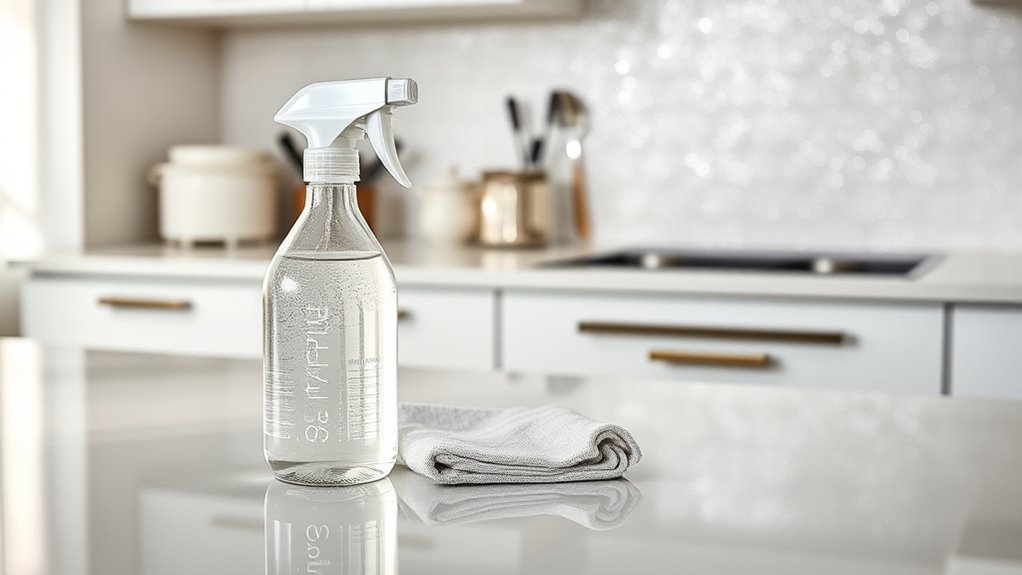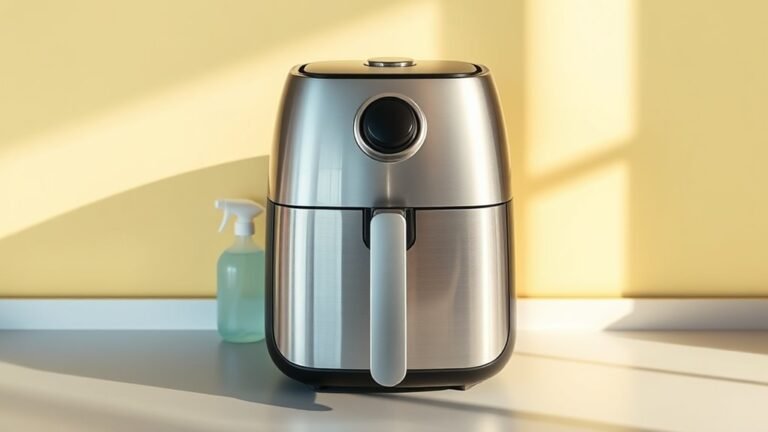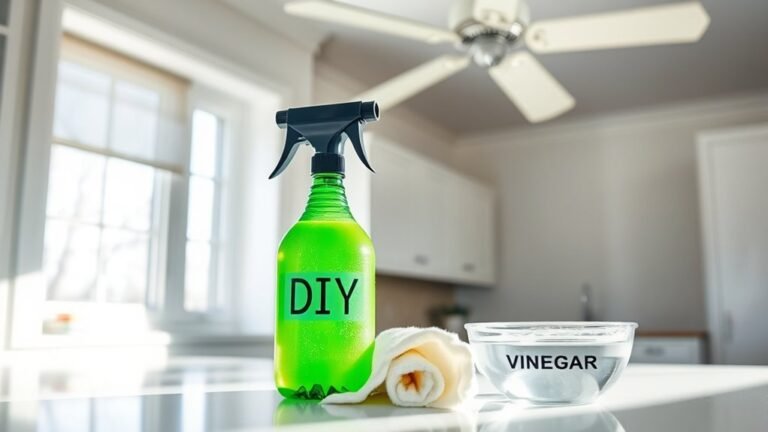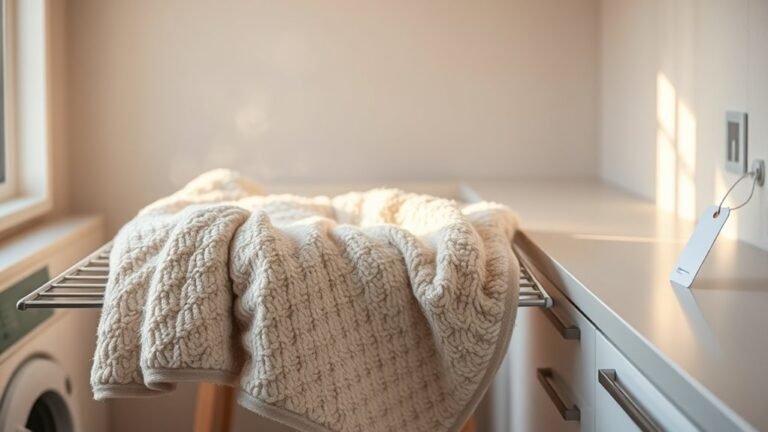Step-By-Step Guide to Cleaning Grease
First, identify the type of grease and the surface you’re cleaning to choose the right method. Gather eco-friendly cleaners, gloves, and sponges. Clear the area to avoid accidents and have supplies near you. Apply a suitable degreaser evenly and let it sit briefly. Then, scrub gently with a non-abrasive brush or baking soda paste for tough spots. Rinse with warm water and dry with a soft cloth to prevent streaks. Keep going to uncover expert tips for tougher grease challenges.
Identifying Grease Types and Affected Surfaces
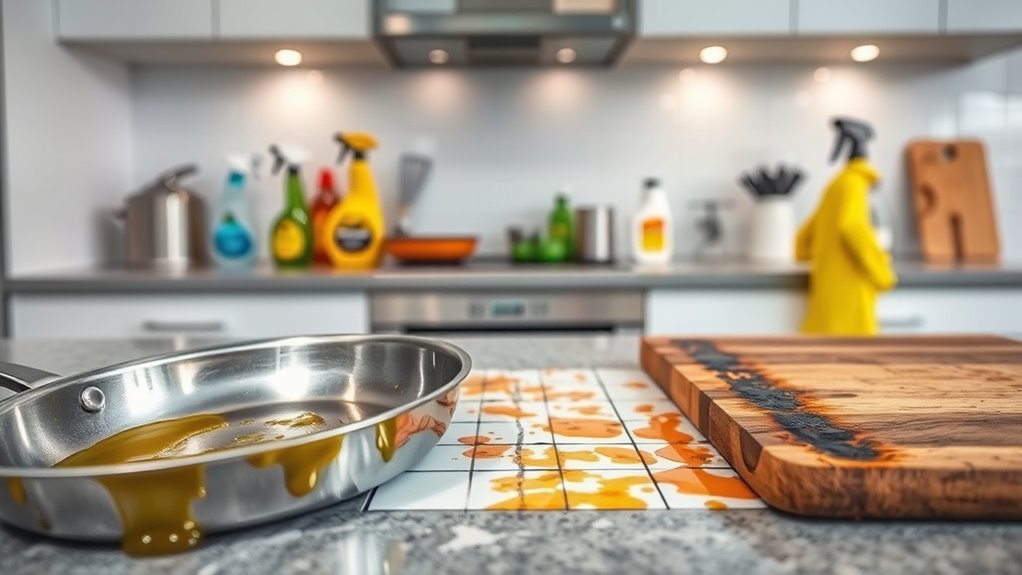
Before you tackle cleaning grease, it’s important to know what type you’re dealing with and where it’s stuck. Different types of grease, like cooking oil residue, automotive grease, or industrial lubricants, each behave uniquely. Understanding this helps you choose the right approach without wasting time or energy. You’ll find grease on affected surfaces such as kitchen counters, stovetops, garage tools, or machinery parts. Some surfaces, like porous stone or fabric, absorb grease more stubbornly, while smooth surfaces like metal or glass are easier to clean. Recognizing these types of grease and affected surfaces lets you work smarter, not harder, freeing you to enjoy a cleaner space without hassle. This knowledge is your first step toward reclaiming control over your environment.
Gathering Essential Cleaning Supplies
To effectively tackle grease, you’ll need a few essential cleaning supplies tailored to the type of grease and surface you’re dealing with. Start with eco friendly products like biodegradable degreasers and natural scrubbing brushes to keep your cleaning routine safe for both you and the environment. Don’t forget gloves and protective eyewear to follow proper safety precautions—these protect your skin and eyes from harsh chemicals or stubborn grease splatters. A sturdy sponge or microfiber cloth will help you scrub without damaging surfaces. Finally, have a bucket for warm water and a spray bottle ready for applying your chosen cleaner evenly. Gathering these supplies beforehand guarantees you’re free to clean efficiently and responsibly, avoiding any last-minute trips or hazards during the process.
Preparing the Area for Cleaning
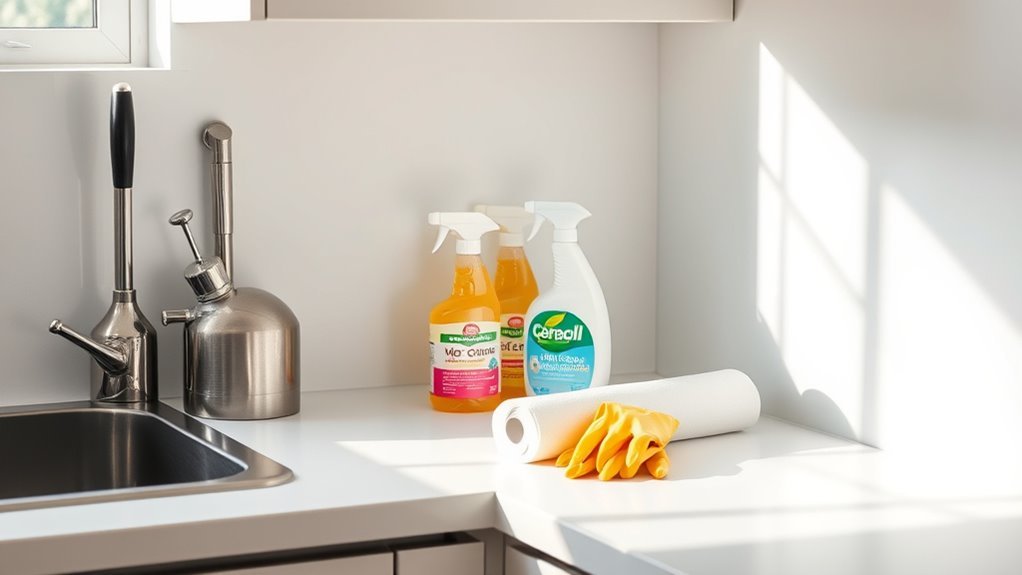
One essential step in preparing the area for cleaning is clearing the space of any items that might get in your way or be damaged by cleaning agents. By removing clutter, you create a safer, more open environment that allows you to move freely and work efficiently. Prioritize area safety by ensuring cords, rugs, or slippery objects are out of the way to prevent accidents. Next, organize your workspace by placing all your cleaning supplies within easy reach, so you won’t waste time searching mid-task. This setup promotes focus and keeps your momentum going, giving you the freedom to tackle grease without distractions. A well-prepared area means you can work smarter, not harder, turning a challenging chore into a straightforward, manageable task.
Applying Cleaning Solutions Effectively
Although choosing the right cleaning solution is important, how you apply it can make all the difference in tackling grease effectively. First, always check the solution concentration to guarantee it’s strong enough to break down grease without damaging surfaces. You want cleaning agents that balance power and safety. Apply the solution evenly using a spray bottle or cloth, covering all greasy areas thoroughly. Don’t rush this step; letting the solution sit for a few minutes loosens the grease naturally, saving you effort later. Avoid over-saturating surfaces, which can cause slippery messes or damage. By mastering the application process, you gain control and freedom from stubborn grease, making your cleaning routine more efficient and less stressful.
Scrubbing and Removing Stubborn Grease
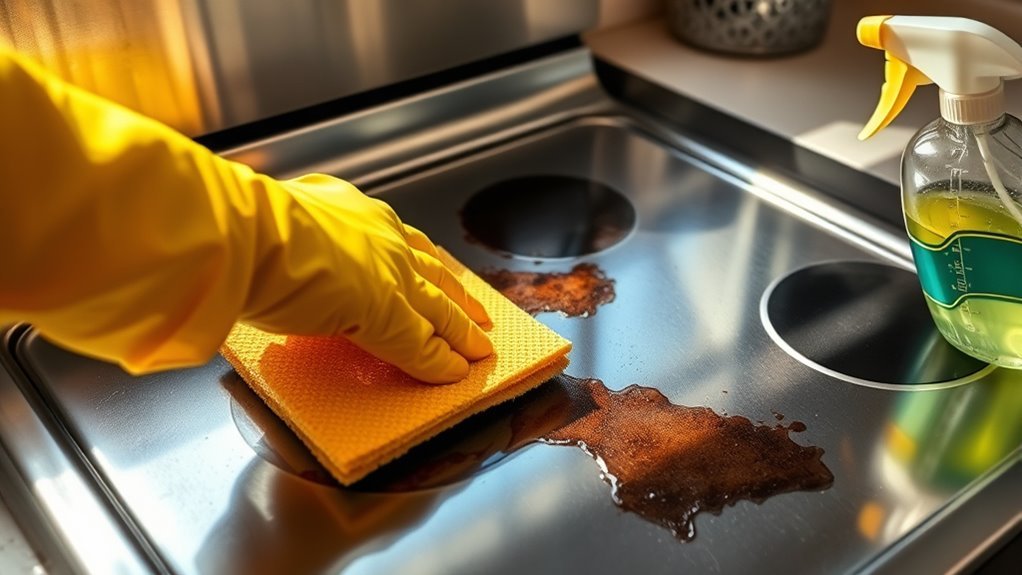
Scrubbing stubborn grease often requires patience and the right tools to get the job done without damaging surfaces. Start by choosing a non-abrasive scrub brush or sponge to avoid scratches. Apply firm, consistent pressure while using circular scrubbing techniques to break down the grease effectively. For tough spots, a paste made from baking soda and water can boost your grease removal without harsh chemicals. Keep your movements controlled to protect the surface beneath. Don’t rush—taking your time guarantees the grease lifts away completely, freeing you from lingering residue. Remember, effective scrubbing techniques combined with the right cleaning solution empower you to reclaim your space quickly and confidently, giving you the freedom to enjoy a cleaner environment without hassle or damage.
Final Rinse and Drying Techniques
After tackling the grease, you’ll want to rinse the surface thoroughly to remove any remaining residue. Mastering effective rinse techniques guarantees your space feels fresh and free. Here’s how to finish strong:
- Use warm water to loosen and wash away leftover grease without spreading it.
- Opt for a spray bottle for targeted rinsing, saving water and effort.
- Wipe with a microfiber cloth to lift away moisture and prevent streaks.
- Air-dry when possible to let surfaces breathe and avoid trapped dampness.
For drying methods, choose what fits your pace—whether quick towel drying or natural air flow, it’s your freedom to decide. With these final steps, you reclaim a spotless environment and the satisfaction of a job well done.
Frequently Asked Questions
Can Natural Ingredients Replace Commercial Grease Cleaners Effectively?
You might wonder if natural alternatives can match the effectiveness of commercial grease cleaners. While natural options like vinegar, baking soda, and lemon juice are great for lighter grease and offer a chemical-free approach, they sometimes fall short on heavy-duty grime. If you’re seeking freedom from harsh chemicals, these alternatives work well for routine cleaning, but don’t expect the same power as commercial products for tough grease buildup.
How Often Should I Deep Clean Grease-Prone Areas?
You should set your deep cleaning frequency based on how often grease builds up, usually once a month works well for most. Sticking to regular grease maintenance tips, like wiping spills immediately and using natural degreasers, helps keep things fresh longer. This way, you’ll enjoy a cleaner space without feeling tied down by constant scrubbing. Find a routine that fits your freedom-loving lifestyle and keeps grease at bay effortlessly.
What Are the Health Risks of Prolonged Grease Exposure?
You risk breathing in harmful fumes, developing respiratory issues, and facing skin irritation when exposed to grease for too long. The health effects can sneak up on you, causing coughing, wheezing, or even asthma-like symptoms. You want freedom from discomfort, freedom to breathe easy, and freedom to stay healthy. Don’t let prolonged grease exposure chain you down—take steps to protect yourself and keep your environment clean and safe.
Can Grease Stains Be Removed From Clothing Without Washing?
Yes, you can tackle grease stains without washing by using quick stain removal techniques. Dab the stain gently with dish soap or a stain remover pen designed for clothing care. Let it sit for a few minutes, then blot with a clean cloth. This method lets you handle stains on the go, giving you the freedom to keep your clothes looking fresh without a full wash every time.
How to Prevent Grease Buildup in Kitchen Appliances?
To prevent grease buildup in your kitchen appliances, you’ll want to follow some grease prevention tips regularly. Wipe down surfaces after cooking and clean vents and filters often. Avoid letting grease sit, as it hardens quickly. Regular kitchen appliance maintenance, like deep cleaning ovens and stovetops, keeps things running smoothly and grease-free. Staying on top of this lets you enjoy a cleaner, freer kitchen without the hassle of tough buildup later.
